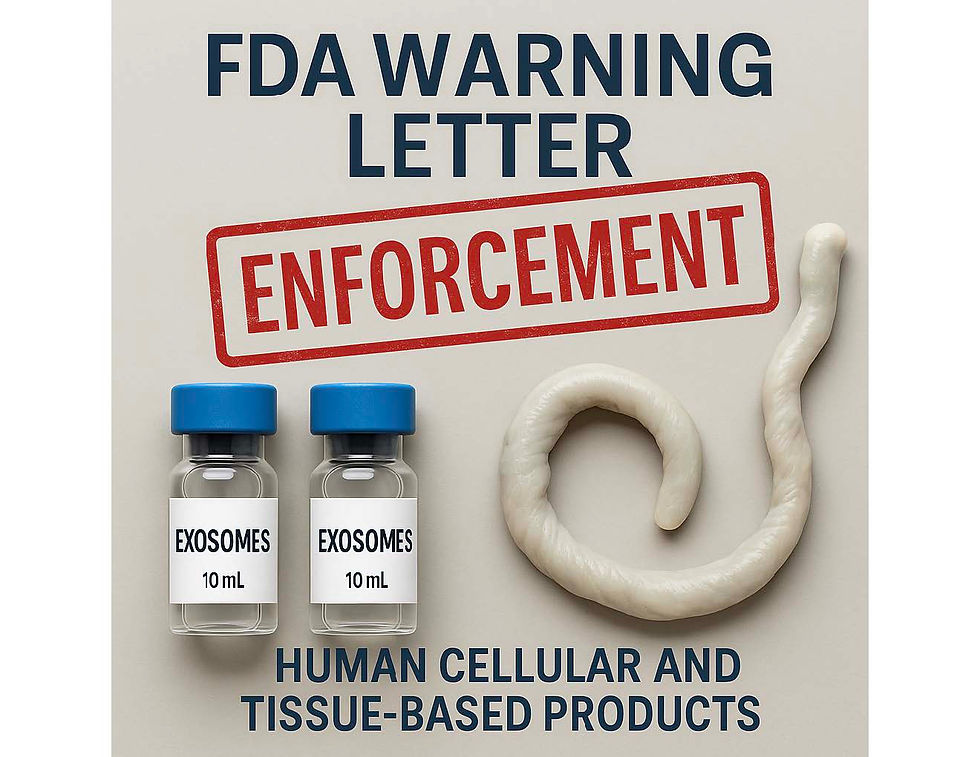The FDA is watching!
- kparmstrong1
- Jun 9
- 2 min read
Updated: 5 days ago

FDA Shifts from Inspections to Instagram: New Warning Letters Signal Evolving Enforcement Strategy
Recent FDA warning letters to two companies in the biologics space reveal an interesting evolution in regulatory enforcement that everyone in our industry should be watching closely.
Supreme Rejuvenation received a warning letter regarding their exosome marketing - but what makes this truly noteworthy isn't the FDA's position (which remains consistent that exosomes are "drugs"), but rather how they conducted their investigation.
The FDA based their findings on a review of Supreme's website and Instagram content - no facility inspection required. This digital-first enforcement approach could dramatically accelerate the pace at which regulators target marketing claims across our industry. (Interestingly, Supreme's website now conveniently claims to be "under maintenance")
Perhaps more concerning is the FDA's specific targeting of carefully-worded scientific language. When Supreme stated "Research suggests that these exosomes may influence collagen organization and fibroblast activity," the FDA wasn't fooled by the intentionally cautious phrasing. This "research suggests" approach has been a common tactic many companies use to create association without making direct claims.
Skye Biologics received similar scrutiny for their umbilical cord tissue marketing, with the FDA objecting to their statement that "Placental tissues have been shown in the literature to be naturally anti-inflammatory..." - highlighting that the "shown in the literature" defense may not provide the regulatory shield many companies assume.
Is this a sign that the FDA is establishing new boundaries for how companies can discuss scientific literature? Are digital-only investigations going to become commonplace? Either way, these cases suggest the FDA is becoming more sophisticated in how they monitor and enforce regulations in the regenerative medicine space.
What's your take? Is this overreach or appropriate enforcement? And how might this impact legitimate scientific communication about emerging technologies?



